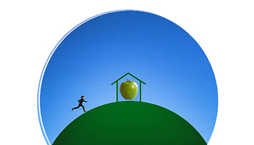As educators and foundations consider how to expand STEM learning in Baltimore, I’d like to offer a few recommendations.
First, define STEM broadly.
When we see STEM as a way of understanding and solving problems of all kinds, it becomes more than a club for kids who like robotics or computer coding.
STEM can help us do everything: it can help us cook better cupcakes, build better skateboards, improve our health, and design better bus routes. When we see that STEM is a tool kit to help us improve our world, it becomes available to everyone and applicable everywhere. Sure, STEM can stay in the science and computer labs, but what if we also let students in on the fact that its also valuable on the athletic field, the board room, the Mayor’s office and the hospital?
Second, use STEM to solve real problems.
I love Frisbee throwing robots as much as anyone, but does the world need another one?
When will we start creating STEM projects designed to solve real problems our students and our community are experiencing?
When are students going to help improve the bus service for their schools, test the water in their nearest stream or find ways to improve their health and learning?
Here are some quick ways to add STEM learning opportunities in Baltimore:
Water quality testing
Michel Anderson, an educator with Blue Water Baltimore is starting to train teachers to test water at their schools and local streams.
Funding to help transport students to their local streams could help students understand the water quality at their local streams. Putting these tests together in an online data base could help students (and everyone else) understand water quality in the Baltimore area watershed.
Benchmark health and learning at schools
Students can benchmark their health (asthma, vision and absenteeism) and the health of the school environment.
Using Tools for Schools from the EPA, students can identify existing asthma triggers like mold, chemicals and pests.
They can test the temperature, humidity, lighting and noise levels in their classrooms with the Operations Report Card by the Collaborative for High Performing Schools (CHPS). Entering their school energy use into Energy Star Portfolio Manager, enables students to compare the energy use at their school to similar schools and to calculate the carbon footprint of their school.
Engage students in the design of their schools and neighborhoods
The 21st Century School Building project, the program to construct or renovate Baltimore City Public Schools, is a perfect for STEM learning.
Students should be designing CAD drawings of potential school designs, talking with architects and construction managers, calculating construction costs and evaluating bus and walking routes.
But so far, students and their teachers are barely consulted in the design and citizen involvement process.
Schools could integrate this learning into their curriculum and engaging the citizen involvement processes with after school programs where parents, teachers, citizens and students work through these important decisions.
Revive Saturday Science
Don Thomas, an astronaut, ran a very successful Saturday morning program at Towson University where students could see and experience science programs which ranged from space exploration to crime scene investigations; from wildlife studies in the Amazon to pyrotechnics. This program was free and would fill an auditorium with students and parents interested in learning. After the program, students could sign up for a short lab experience.
Reviving the program (preferably with Thomas) would give Baltimore area students a great way to experience science.
If a local university isn’t willing to sponsor this program, perhaps it could be run as a collaborative with UMBC, Johns Hopkins, Loyola, Morgan and Towson taking turn presenting programs. This could be a great recruiting opportunity for these institutions as they show off their professors to their prospective students.

Leave a Reply